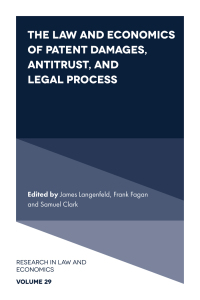apters Chapter 7 Problem 1: Identify which internal control principle is demonstrated in each of the following situations (Responsibility, Segregation of Duties, Documentation Physical Controls, Independent Internal Verification or Human Resource). Principle No. Situation Demonstrated 1. All employees are required to take a two-week vacation each year. 2. One person in the accounting department is responsible for maintaining records for fixed assets while the internal audit department conducts the annual fixed asset inventory 3. Unused equipment is kept in a locked storage room. All sales invoices, purchase orders, and checks are prenumbered. The Internal audit department determines that no purchase order numbers are missing when auditing the purchasing function. Blank, prenumbered checks are kept in a locked vault. 7. Background checks are conducted on all new hires. A person who does not have the authority to write checks approves cash payments. Employees entering the computer room gain access by swiping their identification card 4 5 6. 8. 9. 10. 11 12 13 14 The human resource director determines who has access to computer facilties. Each person operating the cash register operates from their own cash drawer only. All items on the sales floor are tagged with theft detection devices, All employees handling cash are bonded. Cameras are installed throughout the interior and exterior of the company's facilities, Chapter 7 Problem 2 On May 31, Wildhorse, Inc. showed a cash balance per books of $6,842. The bank statement from Emporia State Bank showed a balance of $7,968 on that same date. A comparison of the statement with the Cash account revealed the following facts: 1. The statement included a charge of $60 for the printing of additional company checks. 2. On May 18, the company issued a check for $720 to satisfy an account payable. The journal entry was incorrectly made for $770. 3. Outstanding checks on May 31 totaled $276, and deposits in transit were $1900, 4. On May 31, the bank statement showed an NSF charge of 480 for a check issued by one of Wildhorse's customers and previously deposited by Wildhorse. 5. A deposit in the amount of $500 made by another company was incorrectly put in Wildhorse's account by the 6. Cash sales of $903 on May 12 were deposited in the bank, and the bank correctly recorded the deposit. The journal entry was incorrectly made for $973. 7. On May 31, a $2,810 was received and recorded by the bank from a customer through electronic funds transfer. $2,700 was for a note receivable and $110 was for interest. The collection has not been recorded by Wildhorse. bank A. Prepare a bank reconciliation. Prepare the journal entries necessary to correct Wildhorse's books. Chapter 8 Problem 1: Explain why the Allowance Method for Accounting for Uncollectible Accounts is generally accepted accounting principles while the direct write-off method is not Chapter 8 Problem 2: Accounts receivable has a balance of $120,000. Allowance for Doubtful Accounts has a balance of $10,000. Bad Debt Expense is $8,000. Compute the net realizable value of accounts receivable. Chapter 8 Problem 3: Prepare journal entries for the following assuming that the allowance method is used to account for uncollectible accounts: 1. Accounts totaling $8,200 were written off. 2. An account totaling $2,500 previously written off was collected Journal Chapter 8 Problem 4: At the end of the year, accounts receivable had a $300,000 balance. An aging schedule indicated that $15,000 of these accounts will become uncollectible. The allowance for doubtful accounts had a pre-adjustment credit balance of $400. Prepare the journal entry to record bad debt expense. Journal Chapter 8 Problem 5: At the end of the year, accounts receivable had a $300,000 balance. An aging schedule indicated that $15,000 of these accounts will become uncollectible. The allowance for doubtful accounts had a pre-adjustment debit balance of $650. Prepare the journal entry to record bad debt expense. Journal Chapter 8 Problem 6: First National Bank, Inc. loaned Cooper, Inc. $100,000 on August 1, Year 1, accepting a 9-month, 6% interest note, First National prepares financial statements on December 31. Cooper paid the note on April 1, Year 2. Prepare the journal entries for First National Bank on: August 1, Year 1 December 31. Year 1 April 1. Year 2 . . ARTIAL ONUNE 2125 Files Chapters 7-9 Study Guide.pdf Odf 163 KB Chapter 9 Problem 1 Witte will be debited for each of the followincos Ant Devon Porno ered roker and other 13 16 1 Bant 19 1 Chapter 9 Problem 2: Rusty's Bakery, Inc. purchased a new delivery van on January 1, Year 1 at a cost $39,600. The van is expected to last four years and have a salvage value of $6,000. Rusty uses the straight-line method of depreciation and has a year end of December 31 1. Compute Rusty's annual depreciation expense on the van: $ 2. Compute the book value of the van at the end of Year 3: $ 3. Prepare the journal entry(les) to record the sale of the van on August 1, Year 4 for $7,500: 4 if the van was bought on April 1 rather than January 1. What would be the 1"year's depreciations















